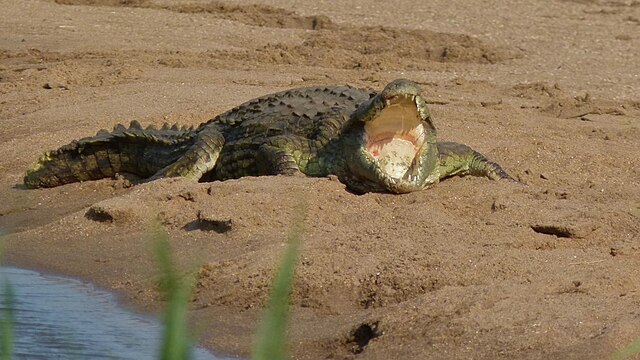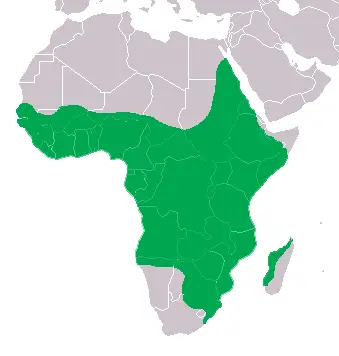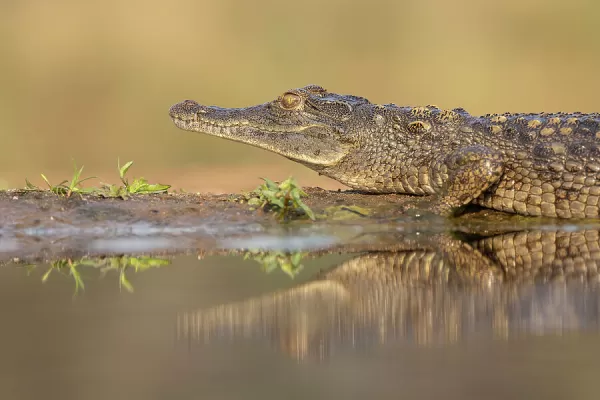Among all modern predators crocodile of the Nile (Crocodylus niloticus)- one of the most intimidating and at the same time fascinating animals. This heir to the dinosaurs, which has hardly changed in recent years 200 million years old. He strong armored body, giant jaws, lightning fast reaction and huge bite force they make it the dominant predator of African rivers and lakes.
It is known for its clever hunting tactics, social behavior, and the ability to survive in harsh environments. Let's consider its anatomy, lifestyle, habitat, food habits, impact on the ecosystem and relationships with people.

Scientific classification
🔬 Classification of the Nile crocodile:
✔ The Kingdom: Animals (Animalia)
✔ Type: Chordal (Chordata)
✔ Class: Reptiles (Reptilia)
✔ Row: Crocodiles (Crocodylia)
✔ Family: Real crocodiles (Crocodylidae)
✔ Gender: Crocodylus
✔ View: Crocodile of the Nile (Crocodylus niloticus)
📌 Interesting!
Title Crocodylus it comes from the ancient Greek word krokódeiloswhich means "pebble worm" - because of the reptile's scaly body, which resembles rocks.
Appearance and body structure
💠 Main Features:
• Length: 3-6 meters (some individuals up to 7 m).
• Weight: 225-750 kg (the largest – more than 1 ton).
• Colour: dark olive, brown or gray, with dark spots.
• Skin: strong, with bone plates (osteoderms) that protect against bumps and bites.
• Chairman: large, elongated, with powerful jaws nostrils located in the upper part of the muzzle.
• Oko: golden-green, have a protective third eyelid.
• Tail: long and muscular, it helps in swimming and attacking.
• Paws: short, with webbing that allows you to swim quickly.
📌 Interesting!
Nile crocodile bite – the strongest among modern animals, close 5000 PSI (pounds per square inch), which is 15 times the bite force of a great white shark!

Habitat and range
🌍 Where does the Nile crocodile live?
* Water bodies Sub-Saharan Africa.
* The largest populations in the world Nili, Lake Victoria, Chad, Congo, Zambezi, Okavango.
* Likes fresh water bodies, but it can also live in brackish water (river deltas, mangrove swamps).
📌 Interesting!
The Nile Crocodile prefers shallow water "it's easier to hunt there.
Lifestyle and behavior
🔹 Social structure
* Crocodiles non-native animals, form hierarchical groups.
* Dominant males control territories and do not tolerate competitors.
🔹 Hunting
• Ambush method: he froze in the water, exposing only his eyes and nostrils.
• Lightning Attack: quickly jumps out of the water and grabs the victim.
• Deadly turn ("death roll”)": twists prey in the water to break her bones or rip off pieces of her body.

🔹 Reproduction
* The female lays eggs from 25 to 80 eggs to the sand nests.
* Guards the nest about 3 months.
* Young crocodiles are often eaten by predators-only a few survive. 1 out of 1000.
📌 Interesting!
Incubation temperature affects the sex of babies: below 31°C-females, above 32°C-males.
Nutrition and environmental role
🍽 What does the Nile crocodile eat?
* Young individuals: fish, amphibians, insects.
• Large: antelopes, zebras, buffaloes, monkeys, fish, birds.
* Sometimes attacked by people and big loot-even hippos.
🌱 Role in nature
* Controls the animal population.
* Eats the sick and weak individuals, purifying nature.
* Maintains the balance of the ecosystem of water bodies.
📌 Interesting!
Crocodiles they swallow stonesto keep your balance while swimming!

Interaction with people
⚠ Danger to humans
• Up to 1,000 attacks annually - the largest number among crocodiles.
* Favorite places of attacks: riverbanks where people live swim or collect water.
🏹 Hunting and conservation of the species
* Past crocodiles massively killed for the sake of skin.
* Today their protected in nature reservesbut poaching still exists.
📌 Interesting!
Ancient Egyptians considered Nile crocodiles sacred and worshipped god Sobek - patron saint of the Nile and fertility.
Interesting facts about the Nile crocodile
🐊 Lives up to 100 years.
🐊 Can go without food for up to 1 year.
🐊 Has a special "sunny smile" "basking in the sun with his mouth open.
🐊 Communicates through the sounds and vibrations of water.
🐊 His heart can operate in two modesby altering blood circulation underwater.
Conclusion
The Nile Crocodile – a unique relic of the past, what it has remained almost unchanged since the time of the dinosaurs. He a fearsome predator and an important regulator of ecosystemswhich maintains balance in nature.
💡 Despite the danger, it needs protection – after all, it is a living symbol of the wild nature of Africa!